![]()
![]()
![]()
Use LEFT and RIGHT arrow keys to navigate between flashcards;
Use UP and DOWN arrow keys to flip the card;
H to show hint;
A reads text to speech;
21 Cards in this Set
- Front
- Back
|
Class of traditional starfish Basic structure |
Class Asteroidea |
|
|
Class of Brittle Stars and Basket Stars Slender and sharp arms |
Class Ophiuroidea |
|
|
Class of Sea Urchins disc-shaped, no arms |
Class Echinoidea |
|
|
Class of Sea cucumbers Soft bodies, no arms or spines |
Class Holothoroidea |
|
|
Class of Sea lilies No madreporite, no pedicellariae |
Class Crinoidea |
|
|
pressure-equalizing organ that allows water to enter the organism |
Madreporite |
|
|
Where the mouth, ambulacral grrove, and tube-feet are found |
Oral surface |
|
|
Where the anus and madreporite are found. |
Aboral surface |
|
|
calcified plates that make up echinoderm endoskeleton |
ossicles |
|
|
a network of water-filled canals that function in movement, food gathering, and as a basic circulatory system |
water-vascular system |
|
|
hydraulic, hollow, thin-walled tubes that end in suction cups and enable echinoderms to move |
tube feet |
|
|
tiny pincers that are used for surface maintenance by sea stars and some sea urchins |
pedicellariae |
|
|
Carry water throughout the body |
Radial: arms Ring: center Stone: connects madreporite |
|
|
the round, muscular structure on a tube foot that aids in locomotion |
Ampulla |
|
|
nervous system of a sea star; encircles the mouth |
Nerve Ring |
|
|
Reproduction of Cnidarians |
Sexual Asexual: Fragmentation |
|
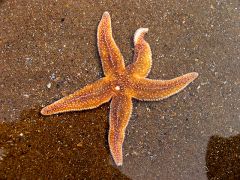
|
Starfish Asteroidea |
|
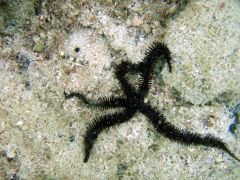
|
Brittle star Ophiuroidea |
|
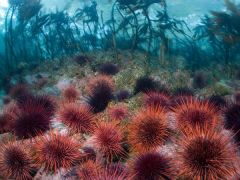
|
Sea Urchin Echinoidea |
|
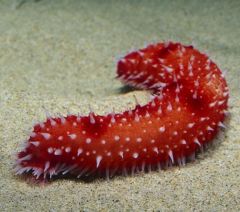
|
Sea cucumber Holothoroidea |
|
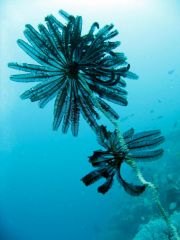
|
Sea Lilies Crinoidea |

